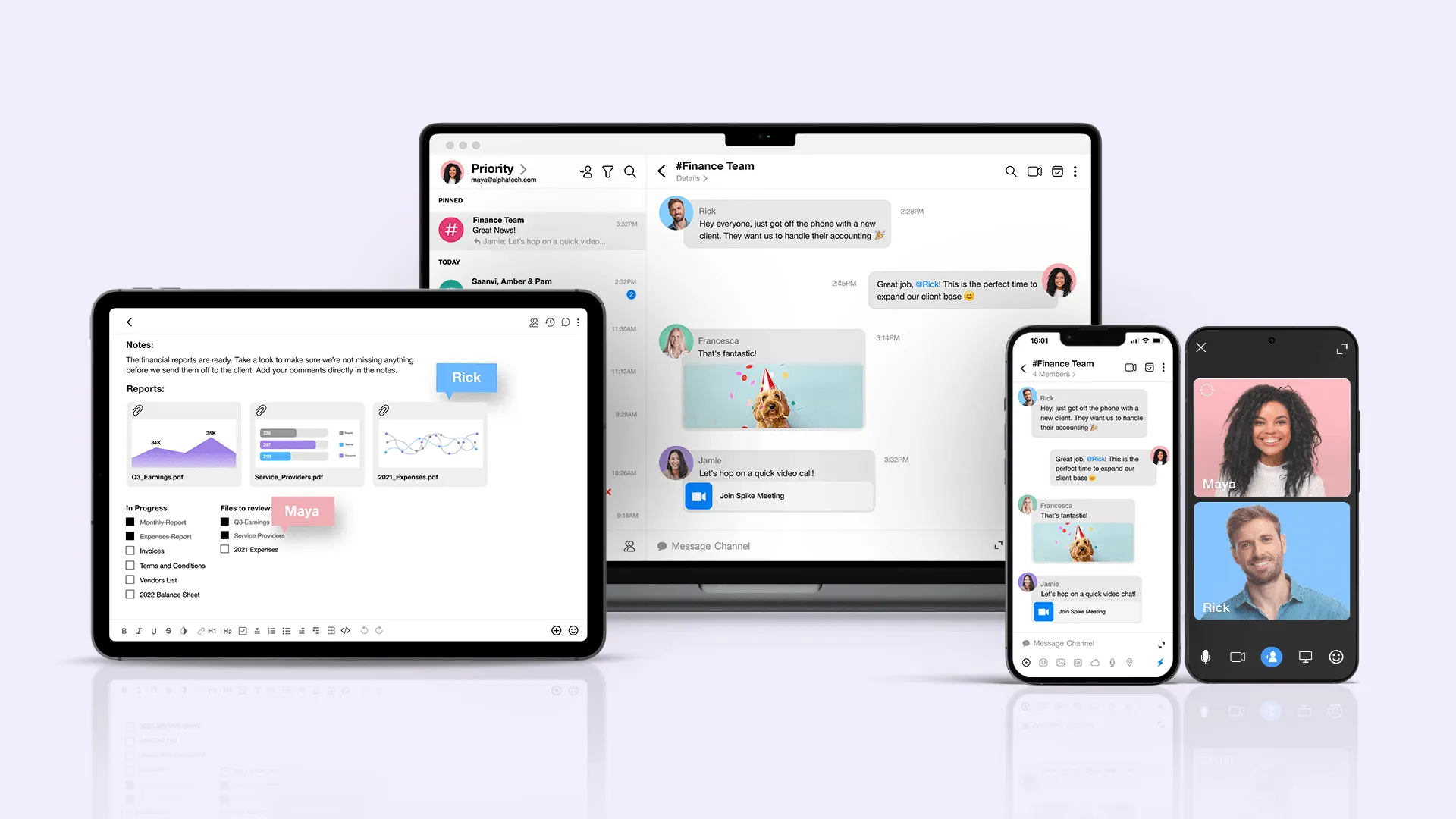How to Foster Team Cohesion for Maximum Productivity

Leading a team is one of the toughest challenges in modern work. You’re tasked with molding a group of diverse individuals, each with their own working styles, communication preferences, and career goals, into a cohesive unit that consistently delivers results. This responsibility can feel overwhelming, especially when traditional management approaches fall short.
What is Team Cohesion?
Team cohesion creates an environment where individuals instinctively collaborate, innovate, and push each other toward their shared goals. Building this kind of cohesion demands deliberate strategy, not just good intentions.
This guide offers practical approaches to strengthening team bonds that directly impact performance. You’ll discover:
- Why traditional team-building often fails to create lasting cohesion.
- How to identify and remove hidden barriers to collaboration.
- Evidence-based techniques for fostering genuine team connection.
- Measurable ways to track and improve team dynamics.
The strategies ahead work because they address team cohesion at its source—the daily interactions and systems that unite or divide teams. Let’s explore how to transform your team’s potential into consistent performance.
Barriers to Team Cohesion
Building team cohesion is like tending a garden in unpredictable weather. Conditions need to be just right, timing is everything, and even with perfect planning, unexpected challenges can emerge. These challenges have evolved far beyond traditional interpersonal dynamics in today’s workplace, making building cohesion even harder.
1. Communication Gaps
Digital tools were supposed to make communication effortless. Instead, they’ve created the illusion of connection. Teams shuffle between Slack channels, emails, and project boards, where every message risks becoming a misstep. Note: remote work hasn’t created these gaps, it’s revealed them.
Information doesn’t flow naturally in digital spaces. A nod of understanding can’t be replicated with an emoji, and the spark of energy when an idea resonates with the room doesn’t translate over video calls. These subtleties of human connection are complex to capture in virtual settings.
Even in co-located teams, unclear communication protocols and siloed workstreams amplify misunderstandings. Teams struggle to align, share ideas effectively, and collaborate meaningfully without intentional strategies.
2. The Hierarchy Paradox
Informal hierarchies naturally form in teams, often shaped by personality traits rather than formal titles. Confident, assertive, or charismatic individuals may unintentionally take on leadership roles while quieter or more reserved team members fade into the background. Over time, this can create imbalances where some voices dominate while others feel undervalued or overlooked.
If left unmanaged, such dynamics can foster tension. For example, a confident employee may overshadow others in meetings, unintentionally stifling creativity or input from quieter team members. Conversely, unclear hierarchies can confuse who is accountable for decisions, creating frustration and inefficiency.
How to adapt:
- Make roles and responsibilities transparent to prevent misunderstandings.
- Actively encourage balanced participation in discussions.
- Foster inclusivity by ensuring that quieter voices are sought out and amplified.
3. Burnout: The Silent Team Killer
Burnout isn’t just an individual issue, it’s a killer of team dynamics. Chronic stress can ripple outward, influencing the entire group’s mood, behavior, and engagement. This phenomenon, known as emotional contagion, highlights how one person’s struggles can silently spread to others.
Imagine a high-performing team where one member begins showing signs of burnout, such as missing deadlines or appearing disengaged in meetings. Other team members pick up on this stress, leading to a collective sense of anxiety and mistrust. Over time, collaboration suffers as the team shifts from a shared effort to individual survival.
How to mitigate emotional contagion:
- Address burnout early: Look for warning signs like irritability or absenteeism.
- Normalize vulnerability: Encourage leaders to share their challenges and invite open conversations.
- Build resilience: Schedule “quiet weeks” or debrief intense projects to give the team space to recover.
5 Effective Team Cohesion Strategies for 2025
Now that we understand what hinders team cohesion, let’s focus on practical solutions—not surface-level fixes or trendy team-building exercises, but approaches that address the root causes of disconnection in today’s workplace.
These strategies are designed to create lasting cohesion by tackling everyday challenges head-on.
1. Reimagine Communication
The way teams communicate shapes everything from daily productivity to long-term trust. But more communication doesn’t automatically mean better connection, especially in a world of Slack notifications and Zoom fatigue.
Start by streamlining communication tools. To cut through the noise, consolidate platforms like Slack, email, and task managers into a single, unified channel. But tools alone aren’t enough—your team also needs intentional spaces for different types of interaction. Consider your digital workspace a mix of conference rooms (focused work) and coffee corners (causal connection).
Most importantly, create an environment where everyone’s voice is heard. In virtual meetings, it’s easy for dominant voices to take over while others fade into the background. Active facilitation can ensure quieter team members feel valued, leading to richer discussions and better collaboration.
Actionable steps:
- Centralize chats, tasks, and emails with a single tool, like Spike, to improve clarity and efficiency.
- Schedule both structured “focus time” and informal “water cooler” sessions for different types of engagement.
- Rotate meeting facilitators to ensure all voices are heard, and fresh perspectives emerge.
2. Build Trust Through Action
Trust is earned through consistent actions and respected boundaries. Leaders play a key role here. By acknowledging mistakes, handling conflict directly, and celebrating risks (even when they fail), they set the tone for openness and collaboration. Teams thrive when they see their leaders practice what they preach.
Equally important is creating an environment where it’s safe to take risks. Instead of focusing solely on successful outcomes, celebrate innovative attempts and frame setbacks as learning opportunities. This builds resilience and a shared commitment to improvement.
Actionable steps:
- Hold regular “feedback Fridays” to create a structured space for constructive conversations.
- Share personal challenges or growth moments as a leader to model vulnerability.
- Introduce a “lessons learned” practice to normalize and celebrate risk-taking.
3. Create Genuine Connections
Forget forced fun or awkward mixers. Team relationships grow when people feel seen and valued for who they are, not just what they produce.
Pay attention to your team’s natural dynamics. If two colleagues work exceptionally well, give them more opportunities to collaborate. Conversely, if specific pairings struggle, address tensions directly before they escalate. Sometimes, the best move is to adjust team configurations to maintain harmony
Actionable steps:
- Assign buddy systems for onboarding to help new hires feel connected from day one.
- Pair employees with natural chemistry on key projects to strengthen their bond.
- Include “personal story” moments in meetings where team members share non-work-related interests.
4. Empower Growth Through Mentorship
Mentorship programs are about creating bridges across experience levels and fostering connection. Structured mentorship helps new team members acclimate while giving veterans a fresh perspective. Peer learning sessions can also build cohesion, as team members share expertise and learn from one another.
Actionable steps:
- Pair junior team members with senior ones for regular one-on-one mentorship sessions.
- Rotate leadership roles in projects to give everyone a chance to take ownership.
- Host peer-learning workshops where team members teach each other their unique skills.
5. Manage the Human Factor
Even the most cohesive teams can fracture under excessive pressure. Stress and burnout erode trust, collaboration, and morale over time.
Leaders should monitor workloads carefully and step in before pressure becomes unmanageable. Equally important is creating recovery spaces, like no-meeting days or “quiet weeks'” to let the team recharge. Sometimes, addressing stress requires more profound changes, like clarifying roles or reorganizing teams.
Actionable steps:
- Use a workload tracker to ensure tasks are distributed fairly across the team.
- Implement regular pulse surveys to identify burnout risks early.
- Schedule monthly no-meeting days to give employees time to focus and reset.
How to Measure Team Cohesion
Measuring cohesion can feel tricky because not all results are linear or quantifiable. However, combining metrics with qualitative insights gives you a clearer picture of your team’s dynamics. Here’s how to measure progress while staying grounded in actionable insights.
1. eNPS (Employee Net Promoter Score)
eNPS measures how likely employees are to recommend your organization to others. It’s a quick way to gauge satisfaction and engagement.
For example, Imagine your eNPS scores are rising, which suggests your team feels more satisfied overall. However, feedback reveals remote workers feel excluded.
This shows a need for more inclusive practices, like hybrid meeting formats or virtual team-building sessions.
What to do:
- Survey employees with one simple question: “How likely are you to recommend working here to a friend?”
- Use follow-up questions to address concerns like communication gaps or workload issues.
- Analyze trends to see which groups feel less engaged and tailor interventions accordingly.
2. Psychological Safety
Psychological safety measures whether team members feel comfortable sharing ideas, taking risks, and admitting mistakes. It’s a key indicator of trust and openness.
For example, your surveys reveal that most employees feel safe speaking up, except in one department. A follow-up uncovers that micromanagement discourages participation, highlighting the need to coach the manager on fostering trust.
What to do:
- Use anonymous surveys with direct questions like “Do you feel safe sharing feedback?”
- Identify patterns by team or department and focus support where needed.
- Revisit scores regularly to track progress over time.
3. Communication Efficiency
How well does your team exchange information? Efficient communication reflects clarity and cohesion.
For example, A communication mapping tool reveals that most conversations flow through one or two team members, creating bottlenecks. Encouraging broader participation helps alleviate this imbalance.
What to do:
- Map team communication to spot silos and gaps.
- Track task clarifications—fewer follow-ups suggest more precise instructions.
- Ensure meetings involve balanced participation by rotating facilitators.
Conclusion: Bringing It All Together

If you’ve made it this far, you’ve likely reflected on your team’s strengths, struggles, and opportunities for growth. You now understand what creates barriers to cohesion and how to overcome them with practical strategies and measurable results.
Building team cohesion takes time, effort, and consistency. The good news is you don’t have to do it alone. Spike can help simplify communication by unifying emails, chats, and tasks into one seamless platform, making collaboration effortless.
By cutting through the noise and keeping your team connected, Spike supports the cohesion you’ve been working hard to create.
Your team has the potential to thrive. Spike is here to help you unlock it.
Try Spike today and start building a more cohesive, productive team.




